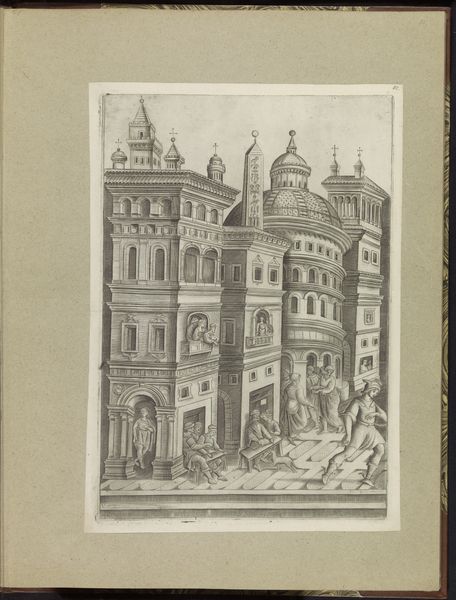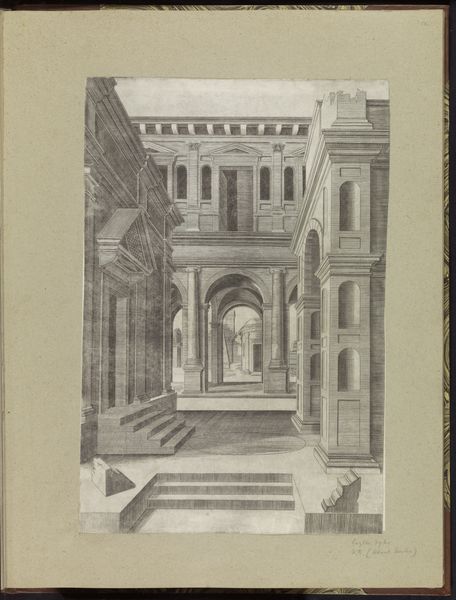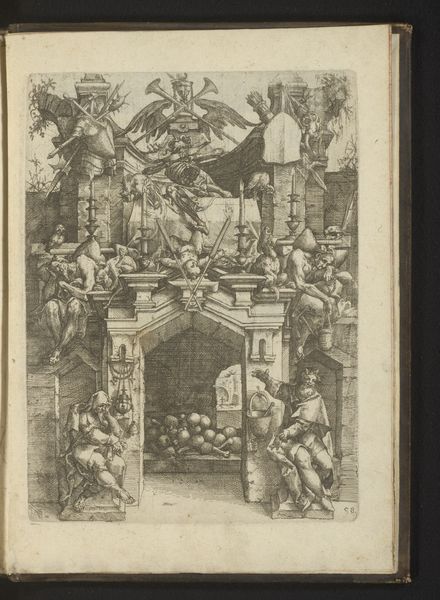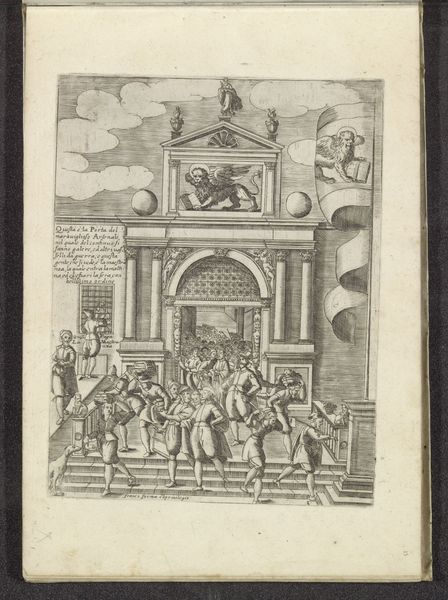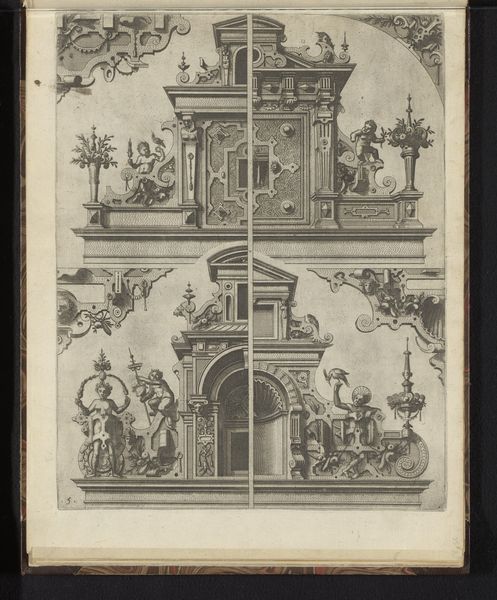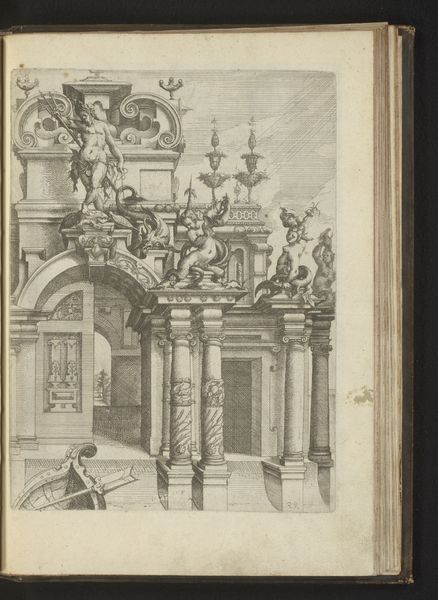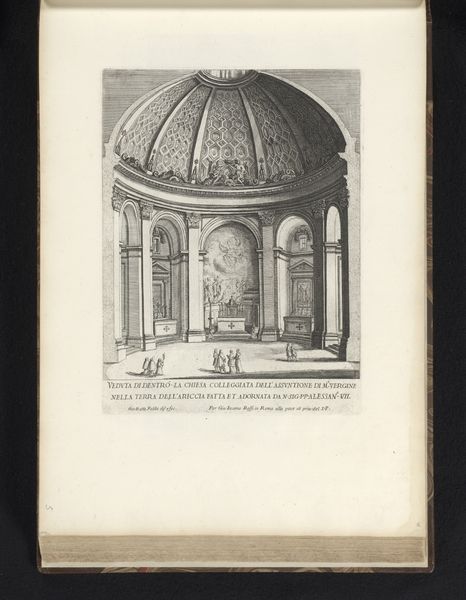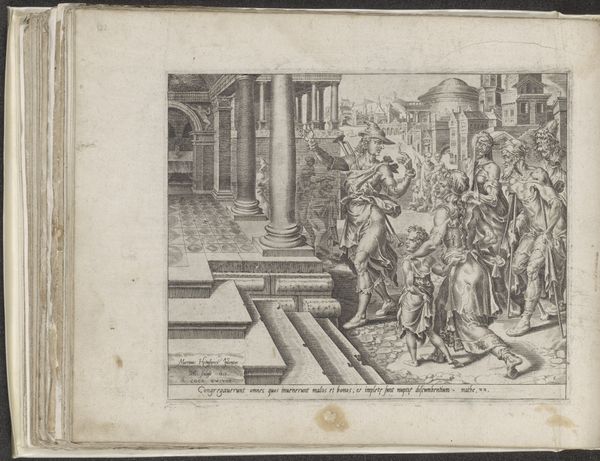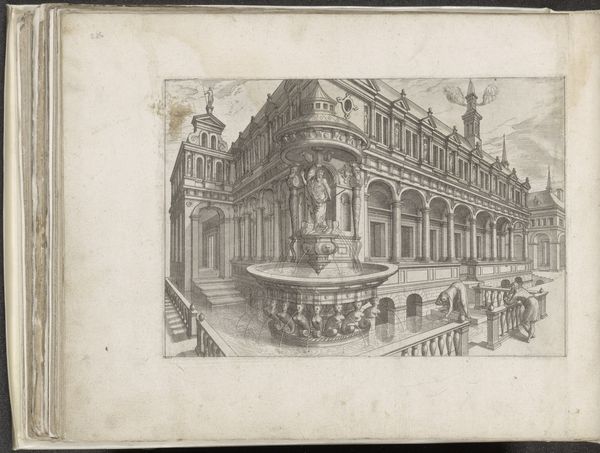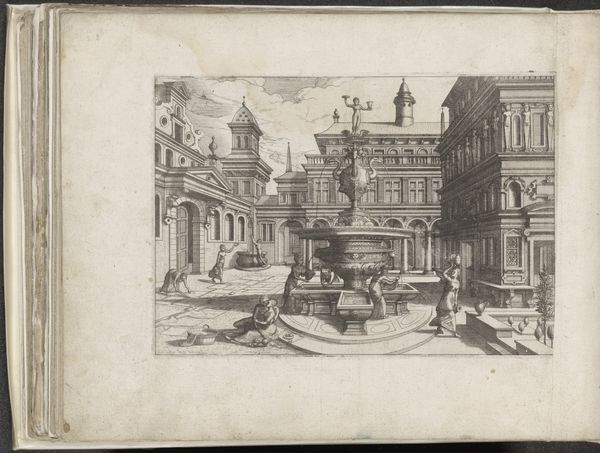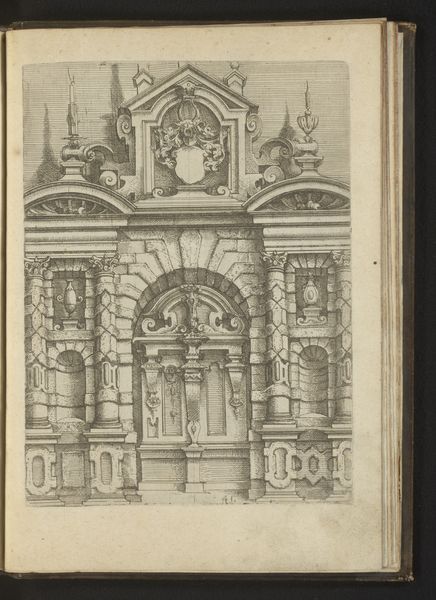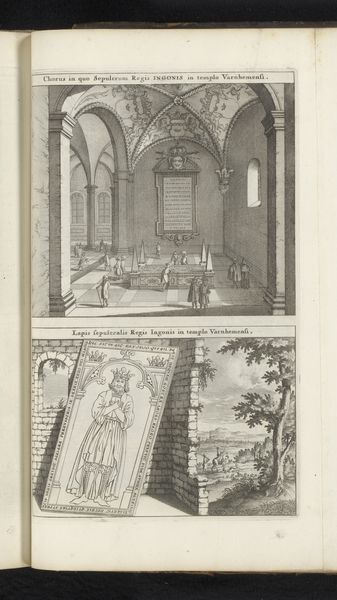
drawing, paper, ink, architecture
#
drawing
#
landscape
#
paper
#
form
#
ink
#
line
#
italian-renaissance
#
architecture
Dimensions: height 431 mm, width 318 mm
Copyright: Rijks Museum: Open Domain
Curator: Before us, we have "Gebouwen op het oude Capitool te Rome," dating from 1595 to 1622. This work, executed with ink on paper, captures the architecture of the old Capitoline Hill in Rome, likely created by an anonymous artist deeply familiar with Renaissance ideals. Editor: My immediate impression is of ordered space, a careful linear rendering establishing depth. The textures, although monochrome, display variation in tone. There’s an almost dreamlike clarity about it. Curator: Indeed, this drawing provides an interesting view into the socio-political landscape of Rome. The meticulous depiction suggests a desire to document and celebrate Roman architectural achievements. Consider how the Capitol was being reimagined as the civic heart of the city at this time. This wasn't just architecture; it was an assertion of power and legacy. Editor: The linear perspective emphasizes the imposing structures and figures in the foreground. Note how the contrast, light and shadow, define volume but it doesn't attempt realistic modelling so much as delineating separate planes. Curator: What's fascinating is that even with the emphasis on classical architecture, you see contemporary figures interspersed. What does the integration of these figures suggest about civic life within the Roman public space? Editor: I appreciate your perspective. However, beyond its representational qualities, it seems this artwork invites viewers to consider the very mechanics of perspective—to be cognizant of geometry and its ability to articulate not merely visual reality, but philosophical underpinnings. Curator: Well, I feel it asks us to contemplate our contemporary world within historical contexts, illustrating architecture's key role in societal power structures. Editor: Perhaps. Ultimately, for me, it’s an interplay between form and depth using minimal elements, a harmonious configuration despite the implied scale. A compelling testament to drawing's evocative power.
Comments
No comments
Be the first to comment and join the conversation on the ultimate creative platform.
